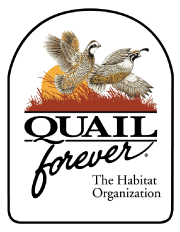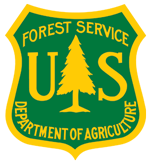Videos
Conservation Planning Process
Conservation planning identifies and prioritizes lands that encompass important natural or cultural resources across the landscape (e.g., critical watersheds, habitat for rare or threatened species) and develops protection and management strategies for these lands. It is a process where science is at the core of planning, but the science is informed by groups of stakeholders using their on-the-ground knowledge and expertise. Dr. Robert Baldwin of Clemson University explains in this video the steps involved in the conservation planning process.
Conservation Planning Webinars
Pre-recorded video presentations representing a broad range of planning topics
A bold plan: The story of WVU and the salvation of a historic home for brook trout
A team at WVU has been working for years with the West Virginia Division of Natural Resources to examine all of the factors that led to warmer temperatures, a wider and shallower stream and other changes that over time threatened the brook trout productivity of this important natural and economic resource.
Classification and Mapping of Cave and Karst Resources
It has been recognized by the Appalachian LCC partnership that to develop and deliver landscape-level planning tools, it is essential to develop an Appalachian-wide map depicting where cave and karst habitats and resources occur across the landscape. For the past 18 months, researchers for the Appalachian LCC funded “Classification and Georeferencing Cave/Karst Resources across the Appalachian LCC” project have been gathering and analyzing data on caves and karst region wide. This work has produced a series of deliverables, including narratives, data tables, geospatial information layers, and a variety of maps. The maps and files provide a comprehensive overview of data availability for examining relationships between environmental factors and biological diversity and distribution within karst areas of the Appalachian LCC.
How to Use Criteria to Bring Items Into a Collection
Definitions and examples of the different criteria fields available
How to Use Criteria to Bring Items Into a Collection
Definitions and examples of the different criteria fields available
How to Use Criteria to Bring Items Into a Collection
Definitions and examples of the different criteria fields available
How to Use Criteria to Bring Items Into a Collection
Definitions and examples of the different criteria fields available
Manomet: Climate Change Vulnerability Assessment for Shorebird
The Climate Change Vulnerability Assessment for Shorebird Habitat (CCVASH) is an innovative, Excel-based assessment and decision-making tool that was developed during 2009/2010 by the Manomet Center for Conservation Sciences's Shorebird Recovery Project [4] in partnership with the United States Fish and Wildlife Service (USFWS [5]) Northeast Region’s Division of Refuges. This partnership, funded in large part by the generosity of individual Manomet donors concerned about climate change impacts on shorebirds, enabled Refuge Biologist Dorie Stolley to develop and pilot the tool during a one-year assignment to Manomet.
Conservation Planning Process
Dr. Robert Baldwin of Clemson University explains in this video the steps involved in the conservation planning process.
Conservation Planning Process
Dr. Robert Baldwin of Clemson University explains in this video the steps involved in the conservation planning process.
Publications & Outreach
A collection of reports, plans, and outreach products related to the activities of the Appalachian Landscape Conservation Cooperative (LCC).
Appalachian LCC and Eastern Brook Trout Joint Venture Project Overviews
In this video, Jason Coombs of the University of Massachusetts gives a brief overview of three current projects taking place with the Appalachian LCC and the Eastern Brook Trout Joint Venture. These include web-based tools and viewers such as the Riparian Restoration Prioritization to Promote Climate Change Resilience tool that will be posted on the Appalachian LCC Web Portal when completed. Coombs also provided an update on the Eastern Brook Trout habitat patch layer.
Habitat Assessment Models and Decision Support Tools for Aquatic Habitats
Fritz Boettner of Downstream Strategies presents on the North Atlantic LCC funded project to develop a decision support tool for an aquatic assessment of the Northeast. The presentation focuses on the development of a modeling methodology, process and outputs that came out of the modeling, and how stakeholders are needed for the project to be a success and develop quality assessment outputs.
Governance Charter
Revised governance charter to include AppLCC State Map and removing line numbers.
AppLCC Winter Newsletter 2013
Our Winter Newsletter details recently funded projects, launch of our new community web portal, activities in support of regional partnerships, and more.
LANDFIRE 2010 Twitter Teach-In
LANDFIRE ecologist Randy Swaty will tweet about LANDFIRE 2010 and provide links to maps, videos, guides, and more.





















